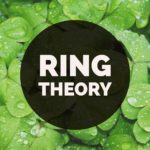Boston-college-exam-eye-catch
Boston-college-exam-eye-catch
 Add to solve later
Add to solve later
Sponsored Links

 Add to solve later
Add to solve later
Sponsored Links
More from my site
 Interchangeability of Limits and Probability of Increasing or Decreasing Sequence of Events
A sequence of events $\{E_n\}_{n \geq 1}$ is said to be increasing if it satisfies the ascending condition
\[E_1 \subset E_2 \subset \cdots \subset E_n \subset \cdots.\]
Also, a sequence $\{E_n\}_{n \geq 1}$ is called decreasing if it satisfies the descending condition
\[E_1 […]
Interchangeability of Limits and Probability of Increasing or Decreasing Sequence of Events
A sequence of events $\{E_n\}_{n \geq 1}$ is said to be increasing if it satisfies the ascending condition
\[E_1 \subset E_2 \subset \cdots \subset E_n \subset \cdots.\]
Also, a sequence $\{E_n\}_{n \geq 1}$ is called decreasing if it satisfies the descending condition
\[E_1 […] If a Sylow Subgroup is Normal in a Normal Subgroup, it is a Normal Subgroup
Let $G$ be a finite group. Suppose that $p$ is a prime number that divides the order of $G$.
Let $N$ be a normal subgroup of $G$ and let $P$ be a $p$-Sylow subgroup of $G$.
Show that if $P$ is normal in $N$, then $P$ is a normal subgroup of $G$.
Hint.
It follows from […]
If a Sylow Subgroup is Normal in a Normal Subgroup, it is a Normal Subgroup
Let $G$ be a finite group. Suppose that $p$ is a prime number that divides the order of $G$.
Let $N$ be a normal subgroup of $G$ and let $P$ be a $p$-Sylow subgroup of $G$.
Show that if $P$ is normal in $N$, then $P$ is a normal subgroup of $G$.
Hint.
It follows from […] A Group of Linear Functions
Define the functions $f_{a,b}(x)=ax+b$, where $a, b \in \R$ and $a>0$.
Show that $G:=\{ f_{a,b} \mid a, b \in \R, a>0\}$ is a group . The group operation is function composition.
Steps.
Check one by one the followings.
The group operation on $G$ is […]
A Group of Linear Functions
Define the functions $f_{a,b}(x)=ax+b$, where $a, b \in \R$ and $a>0$.
Show that $G:=\{ f_{a,b} \mid a, b \in \R, a>0\}$ is a group . The group operation is function composition.
Steps.
Check one by one the followings.
The group operation on $G$ is […] The Quotient Ring by an Ideal of a Ring of Some Matrices is Isomorphic to $\Q$.
Let
\[R=\left\{\, \begin{bmatrix}
a & b\\
0& a
\end{bmatrix} \quad \middle | \quad a, b\in \Q \,\right\}.\]
Then the usual matrix addition and multiplication make $R$ an ring.
Let
\[J=\left\{\, \begin{bmatrix}
0 & b\\
0& 0
\end{bmatrix} […]
The Quotient Ring by an Ideal of a Ring of Some Matrices is Isomorphic to $\Q$.
Let
\[R=\left\{\, \begin{bmatrix}
a & b\\
0& a
\end{bmatrix} \quad \middle | \quad a, b\in \Q \,\right\}.\]
Then the usual matrix addition and multiplication make $R$ an ring.
Let
\[J=\left\{\, \begin{bmatrix}
0 & b\\
0& 0
\end{bmatrix} […] Trace, Determinant, and Eigenvalue (Harvard University Exam Problem)
(a) A $2 \times 2$ matrix $A$ satisfies $\tr(A^2)=5$ and $\tr(A)=3$.
Find $\det(A)$.
(b) A $2 \times 2$ matrix has two parallel columns and $\tr(A)=5$. Find $\tr(A^2)$.
(c) A $2\times 2$ matrix $A$ has $\det(A)=5$ and positive integer eigenvalues. What is the trace of […]
Trace, Determinant, and Eigenvalue (Harvard University Exam Problem)
(a) A $2 \times 2$ matrix $A$ satisfies $\tr(A^2)=5$ and $\tr(A)=3$.
Find $\det(A)$.
(b) A $2 \times 2$ matrix has two parallel columns and $\tr(A)=5$. Find $\tr(A^2)$.
(c) A $2\times 2$ matrix $A$ has $\det(A)=5$ and positive integer eigenvalues. What is the trace of […] Powers of a Matrix Cannot be a Basis of the Vector Space of Matrices
Let $n>1$ be a positive integer. Let $V=M_{n\times n}(\C)$ be the vector space over the complex numbers $\C$ consisting of all complex $n\times n$ matrices. The dimension of $V$ is $n^2$.
Let $A \in V$ and consider the set
\[S_A=\{I=A^0, A, A^2, \dots, A^{n^2-1}\}\]
of $n^2$ […]
Powers of a Matrix Cannot be a Basis of the Vector Space of Matrices
Let $n>1$ be a positive integer. Let $V=M_{n\times n}(\C)$ be the vector space over the complex numbers $\C$ consisting of all complex $n\times n$ matrices. The dimension of $V$ is $n^2$.
Let $A \in V$ and consider the set
\[S_A=\{I=A^0, A, A^2, \dots, A^{n^2-1}\}\]
of $n^2$ […] Matrices Satisfying the Relation $HE-EH=2E$
Let $H$ and $E$ be $n \times n$ matrices satisfying the relation
\[HE-EH=2E.\]
Let $\lambda$ be an eigenvalue of the matrix $H$ such that the real part of $\lambda$ is the largest among the eigenvalues of $H$.
Let $\mathbf{x}$ be an eigenvector corresponding to $\lambda$. Then […]
Matrices Satisfying the Relation $HE-EH=2E$
Let $H$ and $E$ be $n \times n$ matrices satisfying the relation
\[HE-EH=2E.\]
Let $\lambda$ be an eigenvalue of the matrix $H$ such that the real part of $\lambda$ is the largest among the eigenvalues of $H$.
Let $\mathbf{x}$ be an eigenvector corresponding to $\lambda$. Then […] Every Prime Ideal is Maximal if $a^n=a$ for any Element $a$ in the Commutative Ring
Let $R$ be a commutative ring with identity $1\neq 0$. Suppose that for each element $a\in R$, there exists an integer $n > 1$ depending on $a$.
Then prove that every prime ideal is a maximal ideal.
Hint.
Let $R$ be a commutative ring with $1$ and $I$ be an ideal […]
Every Prime Ideal is Maximal if $a^n=a$ for any Element $a$ in the Commutative Ring
Let $R$ be a commutative ring with identity $1\neq 0$. Suppose that for each element $a\in R$, there exists an integer $n > 1$ depending on $a$.
Then prove that every prime ideal is a maximal ideal.
Hint.
Let $R$ be a commutative ring with $1$ and $I$ be an ideal […]